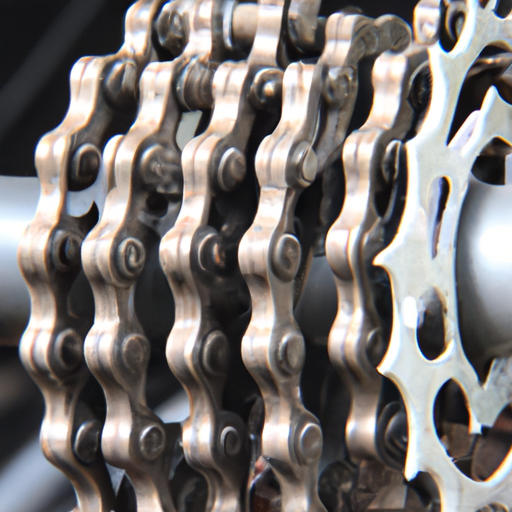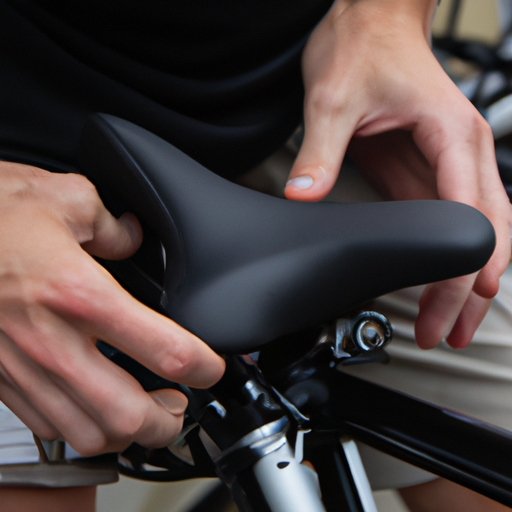What Tools Do I Need For Basic Bike Maintenance?
Maintaining your bike doesn’t have to be a daunting task. With the right tools, performing basic bike maintenance becomes a breeze. Whether you’re a seasoned cycling enthusiast or just starting out, it’s important to have a few essential tools in your toolkit. From wrenches to tire levers, this article will guide you through the must-have tools that will help keep your bike in top shape and ensure a smooth ride every time. So, let’s get ready to roll!
1. Essential Tools
When it comes to basic bike maintenance, having the right tools can make all the difference. Here are the essential tools that every cyclist should have in their arsenal:
1.1 Wrench Set
A wrench set is a must-have tool for any bike owner. It allows you to tighten and loosen nuts and bolts on various parts of your bike, such as the handlebars, stem, and seat post. Make sure to invest in a high-quality wrench set with different sizes to accommodate different components on your bike.
1.2 Screwdrivers
Screwdrivers are essential for any kind of maintenance or repair job on your bike. They come in handy when you need to tighten or loosen screws on components like derailleurs, brake calipers, and shifters. It’s a good idea to have both flathead and Phillips screwdrivers in your tool kit to cover all your bases.
1.3 Pliers
Pliers are versatile tools that can be used for a wide range of tasks. They are especially useful for gripping, holding, and pulling objects. Pliers with a built-in wire cutter can also be used to cut cables and housing. Look for pliers with a comfortable grip and durable construction.
1.4 Adjustable Crescent Wrench
An adjustable crescent wrench is a handy tool for adjusting nuts and bolts of different sizes. It eliminates the need for multiple wrench sizes and is particularly useful for adjusting the tension on your bike’s headset or crankset. Make sure to choose a wrench with a wide jaw opening and a comfortable grip.
1.5 Tire Levers
Changing a flat tire is a common occurrence for cyclists, so having a set of tire levers is essential. These small, plastic tools make it easier to remove and install tires without damaging the rim. Look for tire levers with a flat, wide shape that won’t pinch or puncture the inner tube.
1.6 Chain Tool
A chain tool is an essential tool for any cyclist who wants to perform their own chain maintenance. It allows you to remove and install chain links, as well as break a chain for cleaning or replacement. Look for a chain tool that is compatible with the specific type of chain on your bike.
1.7 Allen Wrench Set
Allen wrenches, also known as hex keys, are needed for tightening and loosening bolts on many bike components. They are commonly used for adjusting saddle height, handlebars, stem, and brake levers. Invest in a set of high-quality Allen wrenches with a range of sizes to cover all your bike’s needs.
1.8 Bike Pump
Keeping your tires properly inflated is crucial for a smooth and safe ride. A bike pump is an essential tool for maintaining the correct tire pressure. There are different types of pumps available, including floor pumps, hand pumps, and CO2 inflators. Choose the pump that best suits your needs and make sure it is compatible with your bike’s valve type.
1.9 Lubricant
Lubricating your bike’s moving parts is vital for smooth and efficient performance. A good bicycle-specific lubricant should be applied regularly to the chain, derailleurs, and other pivot points. It helps prevent rust, reduce friction, and extend the lifespan of your bike’s components. Look for a lubricant that is formulated for your specific riding conditions.
1.10 Cleaning Brush
Keeping your bike clean is not only aesthetically pleasing but also essential for proper maintenance. A cleaning brush with stiff bristles is the perfect tool for removing dirt, grime, and debris from your bike’s frame, drivetrain, and other hard-to-reach areas. Look for a brush with ergonomic handles and durable bristles that can withstand repeated use.
2. Tools for Wheel Maintenance
The wheels of your bike are subjected to a lot of stress and need regular maintenance to keep them in top shape. Here are the essential tools for wheel maintenance:
2.1 Spoke Wrench
Whether you need to true a wheel or replace a broken spoke, a spoke wrench is a necessary tool. This small wrench is specifically designed to fit the nipples on your bike’s spokes. It allows you to tighten or loosen the spokes to ensure the wheel is straight and properly tensioned.
2.2 Truing Stand
A truing stand is a specialized tool that helps you identify and correct any wobbles or bends in your wheel. By spinning the wheel on the truing stand, you can pinpoint areas that need adjustment. This tool is particularly useful for those who frequently build or repair wheels.
2.3 Wheel Alignment Gauge
To ensure proper alignment of your wheel, a wheel alignment gauge is a handy tool to have. It helps you measure the distance between the rim and brake pads to ensure they are perfectly aligned. This is crucial for optimal braking performance and to prevent any pad rub.
2.4 Wheel Dishing Tool
When building or repairing wheels, it’s important to ensure that the rim is perfectly centered between the hub flanges. A wheel dishing tool allows you to measure this alignment and make any necessary adjustments. This tool ensures that your wheel is properly dished, resulting in a stronger and more durable wheel.
3. Tools for Brakes
Brakes are one of the most important components on your bike, so having the right tools for brake maintenance is essential. Here are the tools you’ll need:
3.1 Brake Cable Cutter
When it comes time to replace your brake cables, a quality brake cable cutter is a must-have tool. This tool ensures a clean, precise cut and prevents fraying or damage to the cable. Look for a cutter with sharp blades and ergonomic handles for comfortable and efficient use.
3.2 Brake Pad Alignment Tool
Proper alignment of your brake pads is crucial for effective and responsive braking. A brake pad alignment tool helps you position the pads precisely to achieve optimal contact with the rim or disc. This tool ensures consistent and even braking performance, improving both safety and control.
3.3 Disc Brake Piston Press
If you have disc brakes on your bike, a disc brake piston press is a handy tool to have. It helps reset the brake caliper pistons when installing new brake pads or after bleeding the brakes. This tool ensures that the pistons are evenly reset, allowing for proper pad clearance and optimal braking power.
3.4 Brake Bleed Kit
If you have hydraulic disc brakes, bleeding the system is necessary to maintain optimal performance. A brake bleed kit includes all the tools and accessories needed to properly bleed the brake system, including syringes, tubing, and brake fluid. This kit allows you to remove air bubbles and contaminants from the hydraulic system, ensuring consistent and reliable braking.
4. Tools for Drivetrain
The drivetrain is the heart of your bike, and regular maintenance is essential for smooth shifting and efficient power transfer. These tools will help you keep your drivetrain in top condition:
4.1 Chain Whip
A chain whip is a tool that allows you to hold the cassette in place while removing the lockring. This tool is essential for removing and installing cassettes, as well as for cleaning the individual cogs. Look for a chain whip with a comfortable handle and durable chain for reliable performance.
4.2 Cassette Lockring Tool
To remove and install cassettes, you’ll need a cassette lockring tool. This tool has a specific design that fits into the notches on the lockring, allowing you to loosen or tighten it. Look for a lockring tool that is compatible with your cassette and has a comfortable handle for easy use.
4.3 Bottom Bracket Tool
If you’re doing any work on your bike’s bottom bracket, a bottom bracket tool is a necessity. This tool is used to remove and install the bottom bracket cups, allowing you to service or replace the bottom bracket. Make sure to choose a tool that is compatible with the specific bottom bracket on your bike.
4.4 Chain Wear Indicator
Regularly checking your chain for wear is important to prevent premature wear on other drivetrain components. A chain wear indicator, also known as a chain checker, is a simple tool that measures the elongation and wear of your chain. This tool helps you determine when it’s time to replace your chain, saving you from costly repairs.
4.5 Pedal Wrench
If you need to remove or install pedals on your bike, a pedal wrench is a must-have tool. This specialized wrench has a long handle and a thin profile to fit into the narrow space between the pedal and crank arm. Look for a pedal wrench with comfortable grips and a durable construction.
5. Tools for Headset and Handlebars
The headset and handlebars are critical components of your bike’s steering system. Here are the tools you’ll need to maintain and adjust them:
5.1 Headset Wrench
A headset wrench is a tool specifically designed to adjust the headset bearings. It allows you to tighten or loosen the headset to achieve smooth and precise steering. Make sure to choose a headset wrench that is compatible with the specific type of headset on your bike.
5.2 Star Nut Setting Tool
If you need to install a star nut on your bike’s steerer tube for a threaded headset, a star nut setting tool is necessary. This tool ensures that the star nut is properly installed and flush with the steerer tube, providing a secure anchor point for your stem and handlebars.
5.3 Handlebar Cutter
When it’s time to replace your handlebars or shorten them to your desired width, a handlebar cutter is essential. This tool allows you to make precise, clean cuts on your handlebars without damaging them. Look for a handlebar cutter with a guide or marking system to ensure an even and accurate cut.
5.4 Fork Crown Race Setting Tool
If you need to install a fork crown race, a fork crown race setting tool is necessary. This tool ensures that the crown race is properly seated on the fork crown, providing a smooth and secure fit. Make sure to choose a tool that is compatible with the specific fork crown race size on your bike.
6. Tools for Suspension Maintenance
If your bike has a suspension system, proper maintenance is essential for optimal performance. Here are the tools you’ll need:
6.1 Suspension Pump
A suspension pump is used to adjust the air pressure in your bike’s suspension fork or rear shock. It allows you to fine-tune the suspension to your weight and riding style for optimal comfort and performance. Make sure to choose a pump that is compatible with your suspension system’s air valve.
6.2 Shock Pump
Similar to a suspension pump, a shock pump is used to adjust the air pressure in your bike’s rear shock. It allows you to dial in the desired sag and rebound for optimal suspension performance. Look for a shock pump with a readable gauge and a comfortable handle for easy pressure adjustments.
7. Tools for Frame and Fork
Maintaining the frame and fork of your bike is crucial for safety and longevity. Here are the tools you’ll need:
7.1 Threadless Fork Cutting Guide
If you need to cut down your bike’s fork steerer tube to fit your desired stem height, a threadless fork cutting guide is a necessary tool. This tool ensures a straight and even cut, preventing any damage to the fork or headset. Look for a cutting guide that is compatible with your fork’s steerer tube diameter.
7.2 Frame Alignment Gauge
A frame alignment gauge is used to check the alignment of your bike’s frame. It allows you to identify any misalignment caused by crashes or other impacts. This tool ensures that your bike’s frame is properly aligned, which is essential for optimal handling and performance.
7.3 Frame Tap and Die Set
If you need to clean or repair the threads on your bike’s frame, a frame tap and die set is a necessary tool. This set includes different sizes of taps and dies for cutting or repairing threads on the frame. Look for a high-quality set that is compatible with the thread standards used on your bike.
8. Tools for Bottom Bracket
Maintaining your bike’s bottom bracket is essential for smooth and efficient pedaling. Here are the tools you’ll need:
8.1 Bottom Bracket Tool
A bottom bracket tool is used to remove and install the bottom bracket on your bike. This tool matches the specific design and size of your bottom bracket, allowing you to properly service or replace it. Make sure to choose a bottom bracket tool that is compatible with your bike’s bottom bracket type.
8.2 Bottom Bracket Cup Tool
If your bike has a threaded bottom bracket, a bottom bracket cup tool is necessary for removing and installing the cups. This tool ensures a secure grip on the bottom bracket cups, preventing slippage or damage. Look for a cup tool that is compatible with the specific type and size of bottom bracket cups on your bike.
9. Tools for Saddle and Seatpost
Proper adjustment and maintenance of your saddle and seatpost are essential for a comfortable ride. Here are the tools you’ll need:
9.1 Saddle Height Gauge
To achieve the optimal saddle height for your riding position, a saddle height gauge is a useful tool. It allows you to measure and set your saddle height accurately, ensuring proper leg extension and optimal power transfer. Look for a gauge that is compatible with your bike’s saddle rail design.
9.2 Seatpost Clamp
A seatpost clamp is used to secure the seatpost in the frame and allows for easy height adjustment. If your bike’s seatpost clamp is damaged or not functioning properly, a replacement clamp is necessary. Make sure to choose a clamp that is compatible with your bike’s seat tube diameter.
9.3 Seatpost Tube Cutter
If you need to cut down your seatpost to achieve the desired height, a seatpost tube cutter is necessary. This tool allows you to make a clean, precise cut on your seatpost without damaging it. Look for a cutter with a guide or marking system to ensure an even and accurate cut.
10. Tools for Miscellaneous Maintenance
In addition to the specific tools mentioned above, there are a few miscellaneous tools that come in handy for general bike maintenance:
10.1 Torque Wrench
A torque wrench is used to apply a specific amount of torque when tightening bolts on your bike. This tool ensures that bolts are not over-tightened, preventing damage to components and ensuring proper clamping force. Look for a torque wrench with a range of torque settings and a comfortable handle for easy use.
10.2 Cable Cutter
A cable cutter is a special tool designed for cutting bike cables and housing. Using the right tool ensures clean, precise cuts without fraying or damaging the cables. Look for a cable cutter with sharp blades and ergonomic handles for efficient and accurate cutting.
10.3 Spoke Tension Meter
For wheel builders or those interested in truing their own wheels, a spoke tension meter is a valuable tool. This tool measures the tension in each spoke to ensure even tension throughout the wheel. It allows you to identify and correct any variances, resulting in a stronger and more stable wheel.
10.4 Multi-Tool
A multi-tool is a compact, all-in-one tool that combines various wrenches, screwdrivers, and other tools in a single package. It’s a convenient tool to have on rides or for quick adjustments and minor repairs. Look for a multi-tool with a range of commonly used sizes and functions.
10.5 Workstand
While not a tool in the traditional sense, a workstand is a piece of equipment that every cyclist should consider investing in. It securely holds your bike at a convenient height, allowing you to perform maintenance and repairs with ease. Look for a sturdy, adjustable workstand that can accommodate your bike’s weight and size.
With these essential tools in your bike maintenance arsenal, you’ll be well-equipped to tackle a wide range of maintenance and repair tasks. Remember to always use the appropriate tools for each job and prioritize safety. With regular maintenance and proper tools, you can keep your bike in excellent condition and ensure a smooth and enjoyable ride every time. Happy wrenching!




